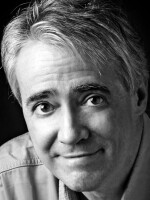Harper's Magazine is publishing a story in its October issue by a promising young author named Ernest Hemingway.
"My Life in the Bull Ring with Donald Ogden Stewart," a five-page story about a socialite who comes face to horns with a bull, was written by Hem when he was just 25. It was rejected in 1924 by Vanity Fair magazine, whose editor, Frank Crowninshield, wrote, "With our regret ... we cannot use it, clever and amusing as it undoubtedly is," which is a phrase that's about as undoubtedly dry as a martini at the old Algonquin.
According to reports, Graydon Carter, the editor of today's Vanity Fair, wanted to run the story before it appears next month in the second volume of The Letters of Ernest Hemingway.
But Patrick Hemingway, who manages his father's intellectual property, is not a fan of today's Vanity Fair, which is fragrantly stuffed with ads for top-shelf perfumes and keeps putting Diana, Princess of Wales, on the cover the way that a lot of wines will put a picture of a leafy estate in Tuscany on their labels.
"It's a sort of luxury thinker's magazine," Patrick Hemingway says of Vanity Fair, "for people who get their satisfaction out of driving a Jaguar instead of a Mini."
He chose Harper's Magazine to run the story instead.
The son of the man who became probably the best-known American author since Mark Twain sent what amounts to a rejection note to the glossy mag that once rejected his father. As Alfred Hitchcock once said, "Revenge is sweet, and not fattening."
I feel confident, as a Hemingway admirer, that Hem himself would have sold his story to whomever offered the largest payment: Harper's, Life, Vanity Fair or the Police Gazette. That's how his descendants can afford to be high-minded.
But thumb through just a few pages of Vanity Fair, and you might get the idea that in those slick columns, Hemingway is often taken to be a lifestyle — a term I suspect he would have detested — instead of a writer. A walking white beard who just drank mojitos, soaked up sun and rum, landed marlin, shot tigers and had glamorous, doomed affairs.
He was a hard drinker, and often hard company. But Ernest Hemingway was also a hard-working professional writer who, even if he went to sleep drunk, would wake before dawn to stand at his desk with a thicket of pencils to confront a cold, white page with his imagination, and write rolling, blunt, beautiful prose that still can stop you cold and make you shiver.
Hemingway wrote for a living. But he lived to be read.
Copyright 2021 NPR. To see more, visit https://www.npr.org.



